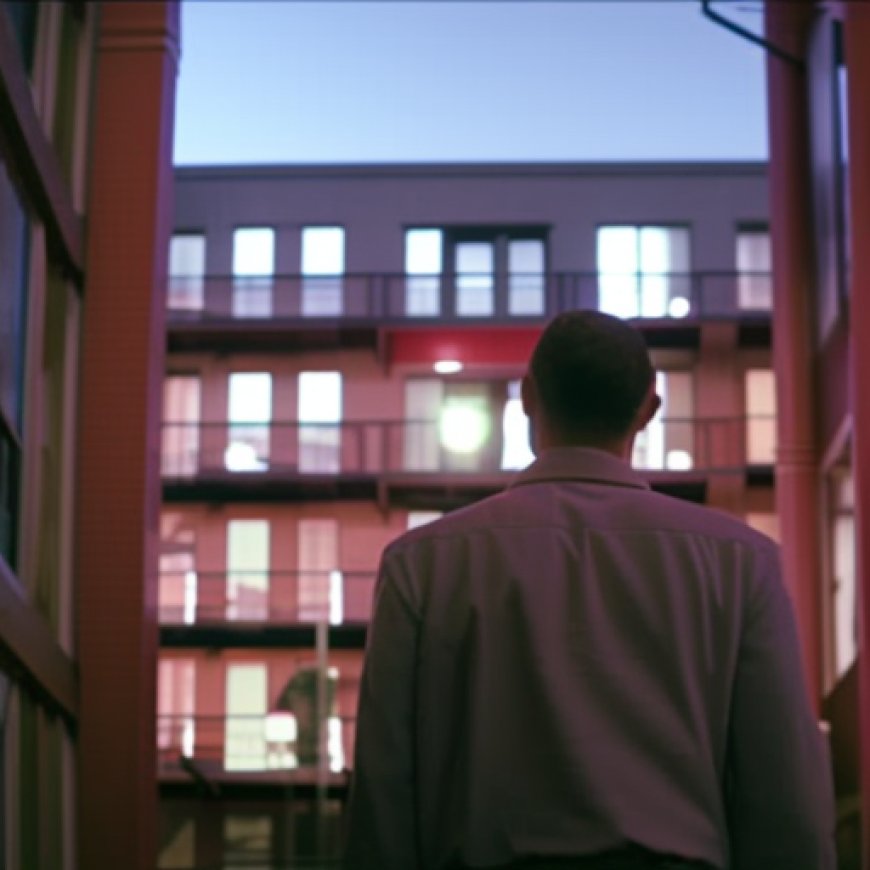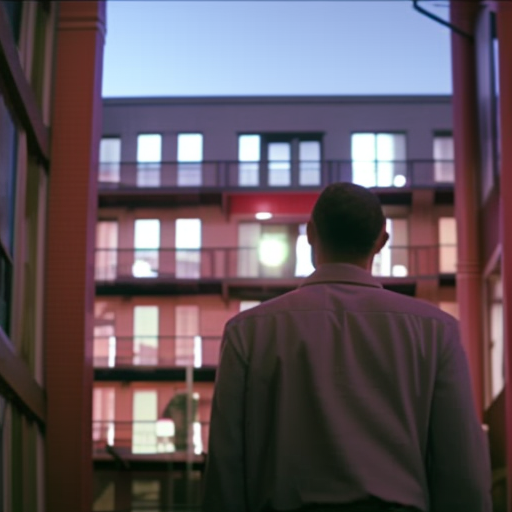Unpaid rent in low-income housing skyrocketed, evictions may be next
Unpaid rent in low-income housing skyrocketed, evictions may be next The Seattle Times


Increase in Unpaid Rent Threatens Nonprofits Providing Low-Income Housing
In Seattle and across the country, nonprofits that operate low-income housing face a skyrocketing balance of unpaid rent.
In the Seattle area, the total rent debt across all tenants is estimated at $170 million, according to the National Equity Atlas, the vast majority of it belonging to low-income households. Across the country, the total is almost $10 billion.
Many housing providers say the amount of overdue rent has grown dramatically since before the pandemic and is hurting their ability to maintain and build more affordable housing in a region and nation that is starved for it.
These organizations, whose missions include bringing and keeping people off the street, have begun to evict nonpaying tenants to bring in paying ones.
Some fear more evictions are on the way.
Housing providers have been meeting with local, state and federal officials to come up with solutions, and in some cases, asking to make it easier to evict tenants.
The increase in unpaid rents can be traced to the pandemic, which was a hurricane of economic disruptions, especially at the lowest rungs of the ladder.
How bad is it?
The Seattle Housing Authority, a public housing agency, saw a threefold increase in tenants with overdue rent over the last four years, going from 554 tenants at the start of 2019 to 1,784 at the beginning of this year. Currently, about 23% of tenants are behind on rent.
The Low Income Housing Institute, one of the largest homelessness services and low-income housing providers in the state, said the number of tenants with more than $500 in overdue rent increased nearly sixfold over the last four years, going from 66 to 369.
Even before unpaid rents reached these levels, low-income housing providers had been sounding the alarm on rising costs for insurance, security, staffing and overhead outpacing their funding.
Low Income Housing Institute Executive Director Sharon Lee said the pandemic squeezed providers further, requiring them to install air purifiers and windows in offices and community rooms. And maintenance and repairs that were deferred are coming due now.
Lee said rents amounted to about 60% of her organization’s income in 2019, the rest coming from government subsidies, public contracts and private donations.
“Excessive rent loss will decimate Seattle’s community of nonprofit housing providers,” Lee said. “We will not have the financial resources to maintain the housing, make mortgage payments or meet the obligations of our lenders.”
The shortfalls are also making it more difficult to add new affordable housing, said Lisa Vatske, a director at the Washington State Housing Finance Commission, a state agency that oversees public funding and programs for housing.
Banks are increasing requirements for organizations to receive loans for new affordable housing projects, according to Vatske, because they see the unpaid rent balances as high risk, which ultimately decreases the number of units being built.
It’s not just a Seattle problem.
According to the Public Housing Authorities Directors Association, the percentage of rent that public housing agencies across the country were unable to collect from tenants grew threefold between 2019 and 2022. Rents comprise more than 30% of public housing authorities’ funding.
“This is the first time that I have ever seen such high percentages of nonpayment of rent,” said Denise Muha, executive director of the National Leased Housing Association, which represents low-income housing organizations across the country that receive federal funding, where she’s worked for almost four decades.
Choosing or unable to pay?
Much of the low-income housing industry believes that government programs designed to shield renters from the economic impacts of the pandemic created a habit of not paying rent.
In 2020, an eviction moratorium was enacted, where landlords were prohibited from kicking out tenants, with few exceptions.
If a tenant stopped paying rent, their balance of unpaid rent would grow, but they could stay in their home for as long as the moratorium was in effect. Then, pandemic relief funds provided one-time rental assistance that wiped the slate clean for many tenants.
Housing providers said a significant number of tenants are still not paying because they got used to spending their income on other needs or may be hoping for more rental assistance.
“It’s kind of conditioned people not to pay,” said Michael Bailey, executive director of Compass Housing Alliance, a homelessness services and affordable housing provider. “We see people receiving income and not putting that to rent.”
The Seattle Office of Housing doesn’t buy it.
“They’re just unable, actually, to pay rent because the rents have been increasing so quickly,” said Maiko Winkler-Chin, director of the Seattle Office of Housing.
For people living in permanent supportive housing, public housing and housing subsidized by government vouchers, rent can be free to the tenant or set at a percentage of their income, with the government subsidizing the rest.
But for a significant number of low-income housing units, rents soared during the pandemic due to their wealthier neighbors earning more.
For affordable housing built using federal tax credits — there are about 45,000 units in King County — the federal government sets the maximum amount of rent that can be charged using a formula tied to an area’s median income.
In Seattle and King County, the median income spiked during the pandemic due to “very high wage earners skewing the top,” said Nona Raybern, communications manager at Seattle’s Office of Housing. That resulted in maximum rents increasing by about 36% in the last five years.
Earlier this year, the U.S. Department of Housing and Urban Development capped yearly rent increases for affordable housing units built using federal tax credits to 10%. A state bill to cap yearly rent increases to 7% passed the House this year, but ultimately died in the Senate.
“I don’t really see the case where the tenant stopped paying for no reason,” said Edmund Witter, senior managing attorney for the Housing Justice Project in King County, which provides free legal assistance to renters facing eviction.
Witter said the most common reasons people stop paying rent are job loss, injury, death in their family or child care issues. Reviewing cases in February, he said the average unpaid rent balance of his clients was about $4,100.
One of his clients, Stephanie Austin, 45, who used to sneak into Sea-Tac Airport to sleep when she was homeless, moved into a permanent supportive housing unit operated by Plymouth Housing at the end of 2022
SDGs, Targets, and Indicators
SDGs Addressed or Connected to the Issues Highlighted in the Article:
- SDG 1: No Poverty
- SDG 11: Sustainable Cities and Communities
- SDG 17: Partnerships for the Goals
Specific Targets Under the SDGs Based on the Article’s Content:
- SDG 1.4: By 2030, ensure that all men and women, in particular, the poor and the vulnerable, have equal rights to economic resources, as well as access to basic services, ownership, and control over land and other forms of property, inheritance, natural resources, appropriate new technology, and financial services, including microfinance.
- SDG 11.1: By 2030, ensure access for all to adequate, safe, and affordable housing and basic services and upgrade slums.
- SDG 17.17: Encourage and promote effective public, public-private, and civil society partnerships, building on the experience and resourcing strategies of partnerships.
Indicators Mentioned or Implied in the Article:
- Number of tenants with overdue rent
- Total rent debt across all tenants
- Percentage of tenants behind on rent
- Number of tenants with more than $500 in overdue rent
- Rents as a percentage of income for housing providers
- Percentage of rent that public housing agencies were unable to collect from tenants
- Average unpaid rent balance of clients facing eviction
- Number of evictions for nonpayment of rent
- Amount of funding available for unpaid rent
Table: SDGs, Targets, and Indicators
| SDGs | Targets | Indicators |
|---|---|---|
| SDG 1: No Poverty | SDG 1.4: By 2030, ensure that all men and women, in particular, the poor and the vulnerable, have equal rights to economic resources, as well as access to basic services, ownership, and control over land and other forms of property, inheritance, natural resources, appropriate new technology, and financial services, including microfinance. | – Number of tenants with overdue rent – Total rent debt across all tenants – Percentage of tenants behind on rent – Average unpaid rent balance of clients facing eviction |
| SDG 11: Sustainable Cities and Communities | SDG 11.1: By 2030, ensure access for all to adequate, safe, and affordable housing and basic services and upgrade slums. | – Number of tenants with overdue rent – Total rent debt across all tenants – Percentage of tenants behind on rent – Number of evictions for nonpayment of rent – Amount of funding available for unpaid rent |
| SDG 17: Partnerships for the Goals | SDG 17.17: Encourage and promote effective public, public-private, and civil society partnerships, building on the experience and resourcing strategies of partnerships. | – Amount of funding available for unpaid rent |
Behold! This splendid article springs forth from the wellspring of knowledge, shaped by a wondrous proprietary AI technology that delved into a vast ocean of data, illuminating the path towards the Sustainable Development Goals. Remember that all rights are reserved by SDG Investors LLC, empowering us to champion progress together.
Source: seattletimes.com

Join us, as fellow seekers of change, on a transformative journey at https://sdgtalks.ai/welcome, where you can become a member and actively contribute to shaping a brighter future.







